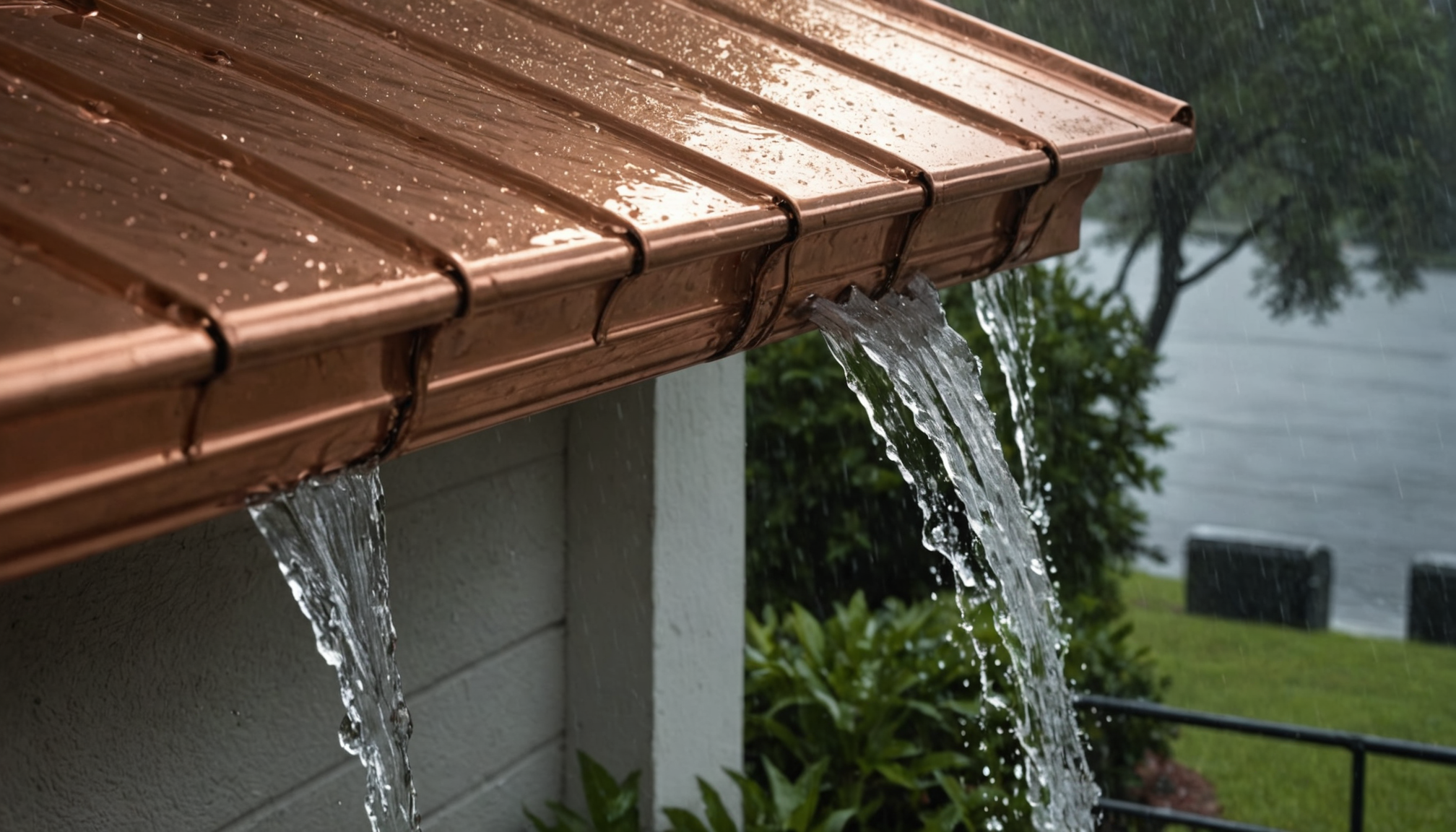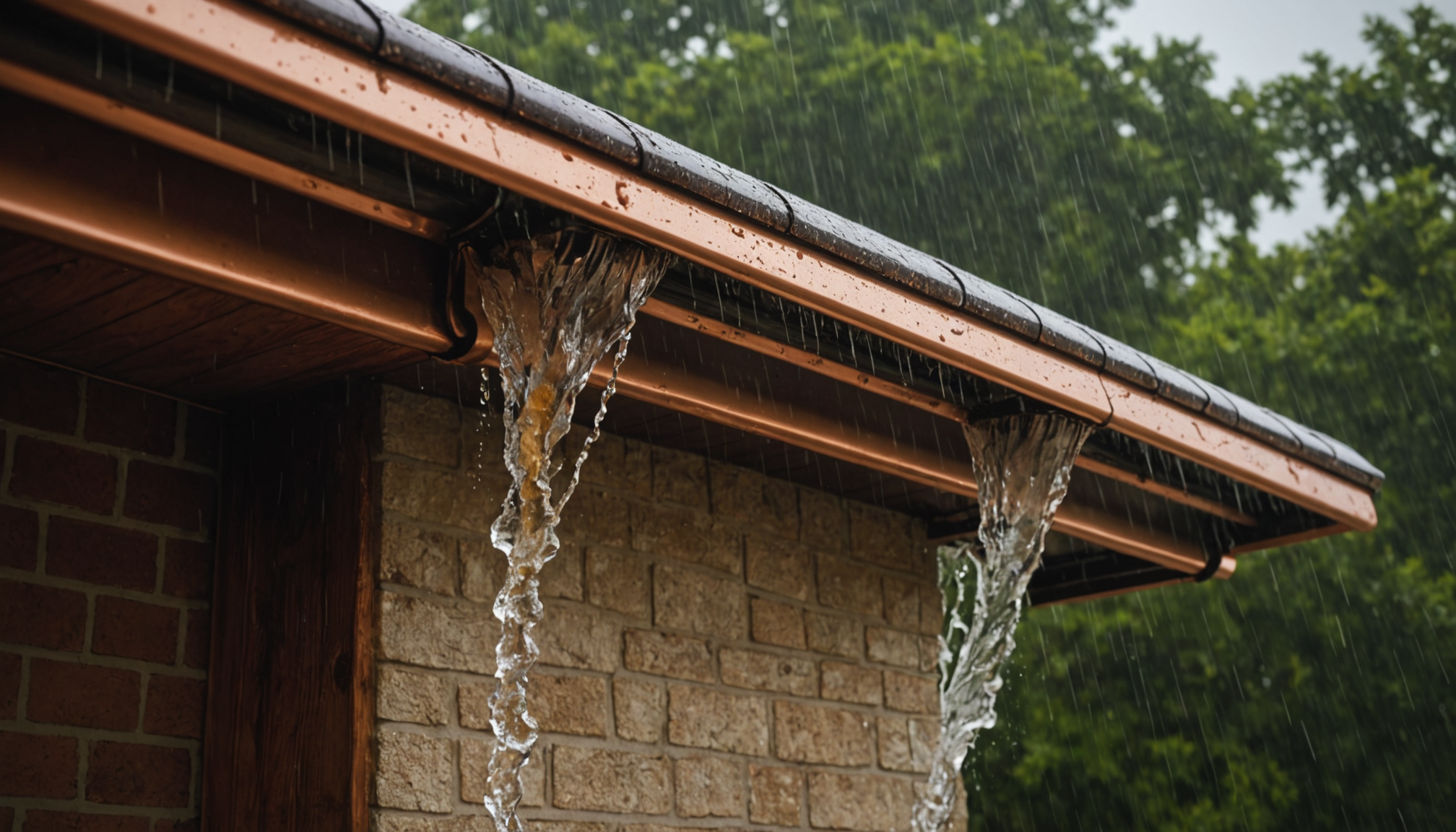Tampa’s unique subtropical climate presents specific challenges for residential drainage systems, with the area receiving an average of 51 inches of rainfall annually, significantly higher than the national average of 30 inches. During the peak rainy season between June and September, Tampa experiences approximately 21 inches of rainfall, with some storms delivering more than 2 inches of rain per hour according to the National Weather Service.
The region’s rainfall patterns are characterized by intense afternoon thunderstorms, particularly during summer months, when about 60% of the annual precipitation occurs. The National Oceanic and Atmospheric Administration (NOAA) reports that Tampa experiences approximately 105 days of rain per year, with July averaging 12 rainy days – the highest of any month.
These weather patterns create unique demands for residential gutters in Tampa. Flash flooding events, which have increased by 25% in the past decade according to Tampa Bay Regional Planning Council data, require robust drainage solutions. The combination of high-intensity rainfall and frequent tropical storms means that standard gutter configurations used in other parts of the country may be inadequate for Tampa homes.
- Summer thunderstorms: 2-4 inches per hour intensity
- Tropical storms: Potential for 6-8 inches in 24 hours
- Hurricane season: June 1 to November 30
- Average storm duration: 45 minutes to 2 hours
Local building codes have adapted to these conditions, with the Tampa Building Department requiring residential gutters to handle minimum rainfall intensities of 3 inches per hour in recent updates. This requirement exceeds the standard 1-inch-per-hour capacity typically specified in other regions, reflecting the area’s distinct precipitation patterns.
Understanding gutter capacity requirements
Proper gutter capacity is essential for handling Tampa’s intense rainfall patterns, with calculations based on both roof size and the expected water volume during peak storms. A standard residential roof of 2,000 square feet in Tampa can collect approximately 1,240 gallons of water during a one-inch rainfall event. This significant volume requires carefully sized gutters to prevent overflow and potential foundation damage.
For Tampa homes, 6-inch K-style gutters have become the industry standard, replacing the traditional 5-inch systems commonly used in other regions. These larger gutters can handle up to 7.5 gallons of water per minute, compared to 5-inch gutters that manage only 5.2 gallons per minute. This increased capacity is crucial during the intense summer storms that characterize Tampa’s weather patterns.
The relationship between roof square footage and gutter capacity follows a specific formula: for every 100 square feet of roof area, gutters need to handle approximately 1 gallon per minute during peak rainfall. Professional contractors use detailed capacity charts that factor in roof pitch, which can increase the effective rainfall collection area by up to 40% for steep slopes common in Tampa’s modern architecture.
Gutter capacity requirements also vary depending on roof valleys and the concentration of water flow. Areas where multiple roof sections merge require enhanced capacity, often achieved through wider gutters or additional downspouts. These high-flow zones typically need gutters capable of handling 150% of the standard capacity to prevent overflow during heavy rain events.
- A 2,000 sq ft roof requires minimum 6-inch K-style gutters in Tampa’s climate
- High-flow areas near valleys need 33% more capacity than standard runs
- Gutter systems should be sized to handle 3 inches of rainfall per hour
- Professional capacity calculations must account for roof pitch and material type
Downspout placement and dimensions
A common yet serious mistake in downspout configuration is placing them too far apart, forcing gutters to manage excessive water volumes over long distances. In Tampa’s intense rain conditions, downspouts should ideally be positioned no more than 30 feet apart, with high-volume areas requiring even closer spacing of 20 feet or less.
Many homeowners undersize their downspouts, not realizing that a 2×3-inch downspout can’t efficiently handle the water volume from a 6-inch gutter during Tampa’s heavy storms. For 6-inch gutters, 3×4-inch downspouts are essential to prevent backup and overflow. Installing multiple smaller downspouts instead of properly sized ones creates bottlenecks in the drainage system.
Another frequent error is improper downspout termination. Some property owners direct water too close to the foundation or fail to use proper extensions. In Tampa’s subtropical climate, downspouts should discharge water at least 6 feet away from the foundation, with splash blocks or underground drainage systems for optimal water management.
Poor placement relative to roof valleys is particularly problematic. Homeowners often miss the importance of installing downspouts directly beneath major roof valleys, where water concentration is highest. These high-flow areas require dedicated downspouts to handle the increased volume effectively.
Installation angles also present challenges. Downspouts installed without proper clearance from walls can lead to moisture problems and deterioration. A minimum 1-inch gap between the downspout and wall is necessary, along with proper strapping every 8 feet to maintain stability during strong storms.
- Minimum 3×4-inch downspouts required for 6-inch gutters
- Maximum 30-foot spacing between downspouts
- One downspout per 600 square feet of roof area
- Additional downspouts needed at roof valleys
- 6-foot minimum discharge distance from foundation
Calculating proper gutter slopes
A proper gutter slope is crucial for efficient water drainage in Tampa’s intense rain conditions. The standard recommended pitch is a minimum of 1/4 inch drop for every 10 feet of gutter length, though local contractors often implement a slightly steeper 3/8 inch drop to accommodate the region’s heavy downpours. This increased slope helps prevent standing water and ensures rapid drainage during sudden storms.
For longer gutter runs exceeding 40 feet, which are common in Tampa’s larger homes, the slope should be adjusted to 1/2 inch per 10 feet to maintain proper water flow. Professional installers use laser levels and specialized measuring tools to achieve these precise gradients, as even small deviations can significantly impact drainage efficiency.
Critical factors affecting slope calculations include:
• Roof configuration and total drainage area
• Length of gutter runs between downspouts
• Local rainfall intensity during peak storms
• Position relative to tree coverage
• Architectural features that may concentrate water flow
High-volume areas, particularly near valleys or where multiple roof sections converge, require special attention to slope calculations. In these zones, installers often increase the pitch to 5/8 inch per 10 feet to handle the concentrated water flow typical during Tampa’s summer thunderstorms.
- Minimum slope: 1/4 inch per 10 feet of gutter length
- Optimal slope for Tampa conditions: 3/8 inch per 10 feet
- Maximum recommended slope: 1/2 inch per 10 feet
- Valley areas require 5/8 inch slope per 10 feet
Common mistakes to avoid include creating reverse slopes, which trap water and lead to overflow, and excessive slopes that cause water to overshoot gutters during heavy rains. Regular maintenance and inspection of gutter slopes is essential, as settling foundations and aging fasteners can affect the originally installed pitch over time.
Remember, while these measurements may seem minor, even small slope adjustments can significantly improve your gutter system’s performance during Tampa’s challenging weather conditions. Working with experienced professionals who understand local rainfall patterns will ensure your drainage system maintains optimal efficiency throughout the year.
Materials and durability considerations
- What’s the best gutter material to withstand Tampa’s harsh weather?
- Aluminum gutters with a thickness of .032 inches or greater are ideal for Tampa’s climate, offering excellent durability and corrosion resistance. These gutters typically last 20-25 years when properly maintained and can withstand both intense UV exposure and heavy rainfall.
- How often should I replace my gutters in Tampa’s climate?
- Quality gutters properly installed in Tampa should last 15-20 years, depending on material choice and maintenance. However, homes near the coast may need replacement every 10-15 years due to accelerated corrosion from salt exposure.
- Will copper gutters hold up in Tampa’s rainy season?
- Copper gutters are excellent for Tampa’s climate, lasting 50+ years with proper installation and maintenance. While more expensive initially, their superior durability and natural patina make them a worthwhile investment for homeowners seeking long-term solutions.
- Is seamless aluminum worth the extra cost for Tampa homes?
- Seamless aluminum gutters are highly recommended for Tampa homes as they eliminate joint leaks that commonly occur during heavy rains. The investment typically pays off through reduced maintenance costs and better protection against water damage.
- What gutter guards work best for Tampa’s tropical storms?
- Micro-mesh or reverse curve gutter guards perform best in Tampa’s climate, effectively keeping out debris while handling high-volume rainfall. These systems prevent clogging during tropical storms and reduce maintenance requirements throughout hurricane season.











